

Max Davies
2026 Toyota HiAce review
2 Hours Ago
Chris gets behind the wheel of the Stinger GT to figure out whether it's as quick around a track as it is in a straight line.
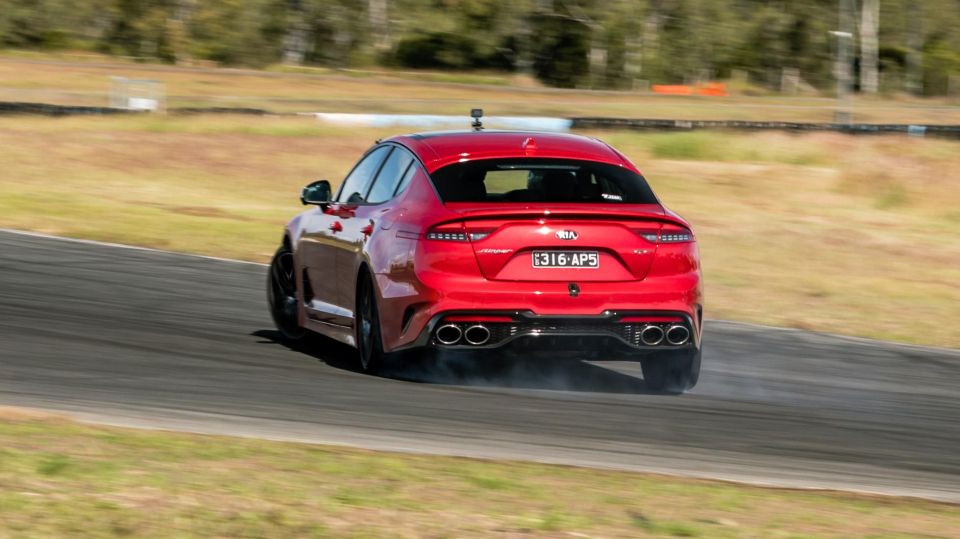
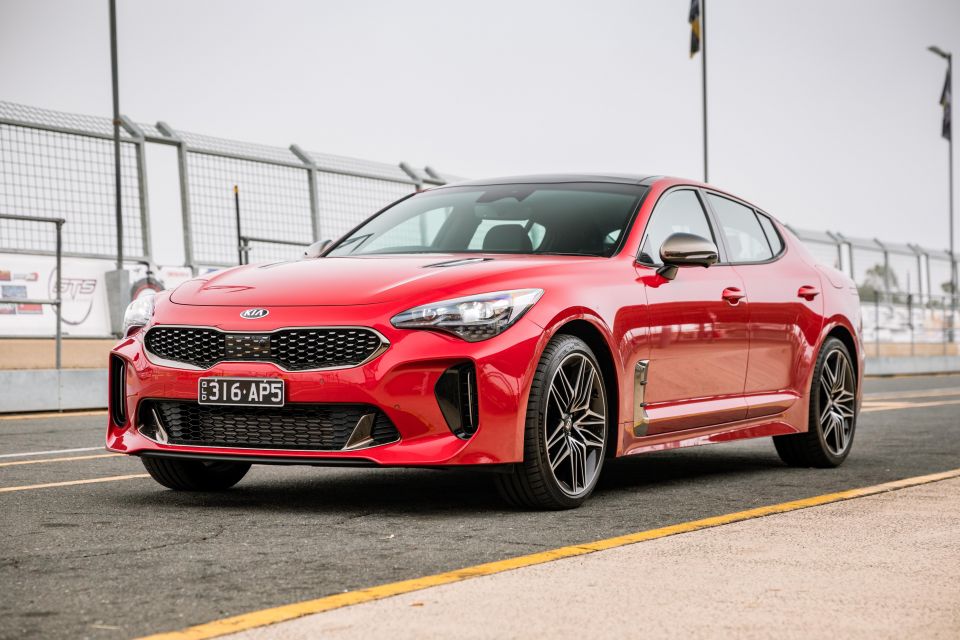

Performance Editor
New from
$63,260
excl. on-roads

Performance Editor
New from
$63,260
excl. on-roads


Performance Editor
New from
$63,260
excl. on-roads

Performance Editor
New from
$63,260
excl. on-roads
Quickly see how this car stacks up against its competition. Select any benchmark to see more details.
Where expert car reviews meet expert car buying – CarExpert gives you trusted advice, personalised service and real savings on your next new car.
The2021 Kia Stinger GT is a vehicle that has been heavily requested for a CarExpert track review. With the demise of affordable, rear-wheel drive performance sedans in Australia, the Stinger is basically alone in this segment.
It took a few laps to really get the most out of the Stinger, but as the lap times dropped my appreciation for the Korean liftback grew.
I started to understand there is a lot more to this vehicle than just the rear-wheel drive layout and straight-line performance everyone talks about.
Is it a track car? No! Is it more than capable on the track? Absolutely!
It’s really interesting I was able to appreciate the Stinger much more on the road, after seeing what it was capable of on the track.
As good as it is on the road, you can’t get a full sense of the underlying engineering efforts until you go beyond the limit.
It feels nimble and sharp relative to its size, and is deceptively rapid.
The feedback and engagement it offers is excellent, with the only disappointment being the slightly unrefined ride on harsher back roads.

The twin-turbocharged 3.3-litre V6 is an absolute pleasure on the road and more than enough for some entertainment on track.
With 274kW (6000rpm) and 510Nm (1300-4000rpm), it is very user-friendly, offering smooth performance across a fairly wide power band.
It just runs out of steam at the top of the rev range, but because there’s so much torque from low revs you don’t need to bounce the needle off the limiter to get the most out of the Stinger.
Short shifts are your friend here and you can pretty much grab for another gear at any point and it will keep pulling.
All of this makes it extremely drivable on the track, yet also makes it a challenge to extract the absolute most out of it. Throttle control is critical to achieving a good lap time, but not critical if you just want to put a big smile on your face.

With traction control off, the Kia Stinger GT delights in torching its Michelin rubber, trying its best to find some traction.
It really reminded me of the few attempts I have had in a V8 Supercar. The engine has the ability to overpower the tyres with ease, so it takes a fine touch to manage it off the slow corners.
Talking absolute straight-line performance, the launch control system was very easy to engage and also clever in its ability to gain momentum without leaving clouds of smoke.
On the track I managed a 5.2-second run from 0-100km/h, but I had the chance to test it on a slightly grippier surface a few days late and achieved a 5.0-second time, which is only 0.1 sec off Kia’s claim of 4.9 seconds.
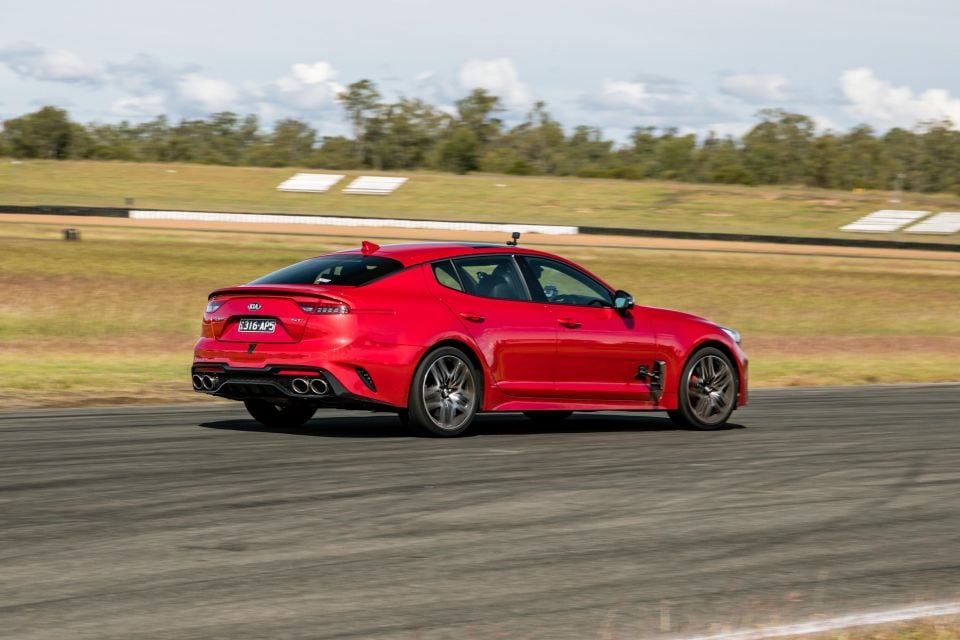
The brakes on the Kia Stinger GT are maybe the most disappointing part of the car, but luckily that means they are still actually pretty good.
They were very consistent in terms of performance, and once I got used to the subtleties of how to get the best reaction from them I could produce the result I wanted.
The problem was that I was aggressive with my initial input, the brake pedal would go firm and I would lose the ability to modulate and control the balance of the car.
If I took my time applying pressure, then I would have more control but also a lot more pedal travel.
This is just a refinement aspect and it will be interesting if Kia chooses to take it more in the direction of other manufacturers, where the car is expected to help you brake, or if it can take some risks and still make it a driver’s car.
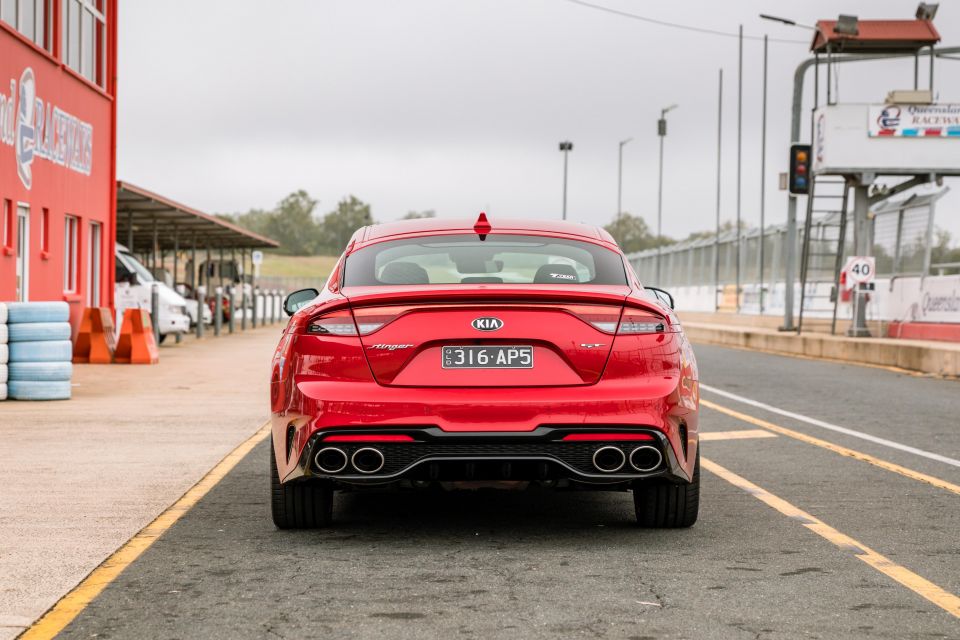
This blew my mind, and was the highlight of my time with the Kia Stinger GT.
I don’t think I would have ever appreciated the chassis so much if I didn’t have the opportunity to explore the full potential of the car on a closed race track.
I loved how as a driver, I really had control over the balance of the car. I could make it understeer or oversteer at will!
Only when the tyres got really warm did that ability deteriorate, but never to the point where it was impossible to manage.
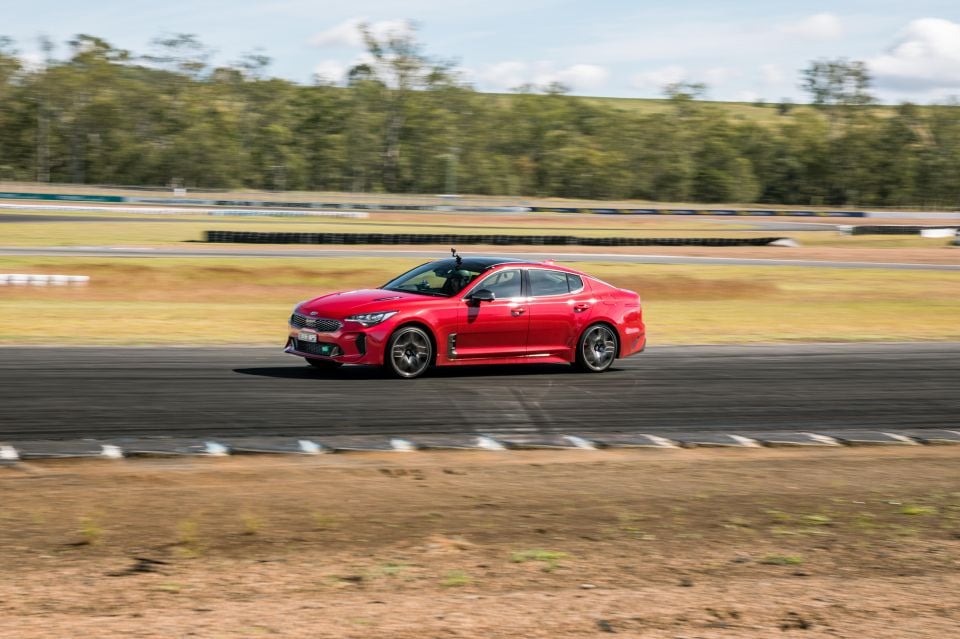
The angles I could achieve and recover from while testing out the car’s rear wheel drivability, were mighty impressive! Possibly the best car we have tested on the CarExpert test track in this regard.
One lap, with some slightly optimistic entry speed into turn one, I saw substantial oversteer for the majority of the corner, yet I had absolutely no problem controlling the car all the way to the exit in a perfect slide.
The camera crew were so impressed with my accidental drift for the drone they thought I did it for them under complete control. If I didn’t admit to my mistake, I would have looked like a complete legend.
But if I didn’t have a chassis that gave me the ability to regain some form of control and settle into a calm attitude, the test could have ended very prematurely.

The eight-speed automatic transmission was actually very competent on the track. It held gears with no problem and the downshifts were more than acceptable.
With so many gears and such a torquey engine, I had to be careful not to downshift too many times, as you would end up exiting the corner too high in the rev range. It could have easily handled wider gearing in the lower gears.
The clutch-type rear limited-slip differential in the Kia Stinger GT worked well most of the time. It had pretty good freedom on entry and more than enough locking to catch the slip across the axel. The progression with which it caught the slip was also nice – it was quick without being harsh.
My only complaint was when I touched a harder kerb it had the tendency to slip a wheel and would affect the balance of the car.
The was a rare occurrence though and is unlikely to be an issue on most roads. Slight refinement of the dampers would also help with this.

On normal road conditions and smoother surfaces the suspension is nicely tuned. It offers a reasonable amount of support and still allows some movement to gain traction when needed.
The rear end settles very gently as you apply the throttle, and you can feel the grip build.
On harsher back roads it’s a little firm and passes almost too much back into the chassis. The same thing happens on the track when riding the larger curbs, it just unsettles the car a bit too much.
There’s very fine line here between being ‘right’ and ‘not so right’, and the dampers in the Stinger are not far off at all.
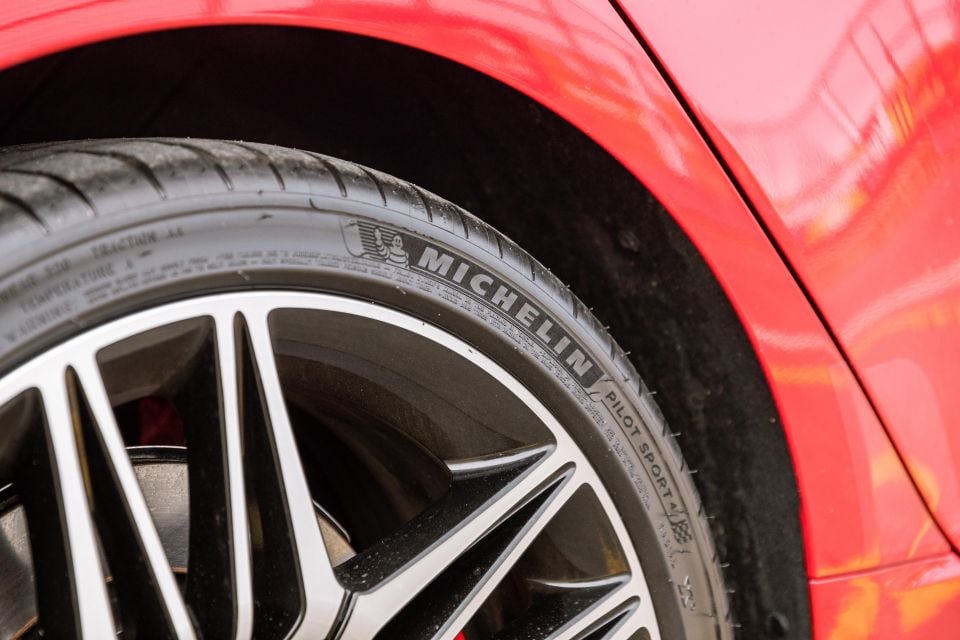
The steering was solid and felt very direct and precise. The feedback was good and offered and nice sense of how hard I could push when at the limit.
The Kia Stinger GT comes standard with staggered Michelin Pilot Sport 4 tyres – 225/40 R19 front and 255/35 R19 rear.
These were surprisingly good on the track, but just lacked a little bit of lateral grip.
Because the chassis is so good, you could really feel them as they dropped away, but you could manage that drop off with the feedback the car offered.
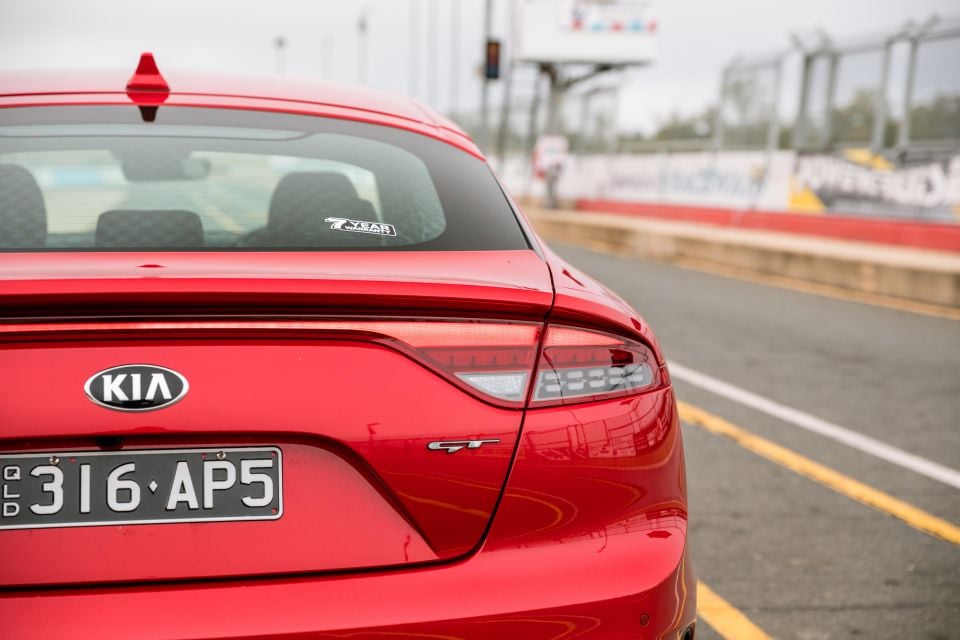
I actually found the traction control and ESC to be quite user-friendly and I would recommend anyone exploring the limits of the Kia Stinger GT should keep these activated unless they have plenty of safe space on a track.
My first lap with everything still switched on actually took some effort to beat once I turned them off. The time difference between the two was only 0.5sec, in favour of no assistance.
I did my fastest lap with everything in Sport mode.
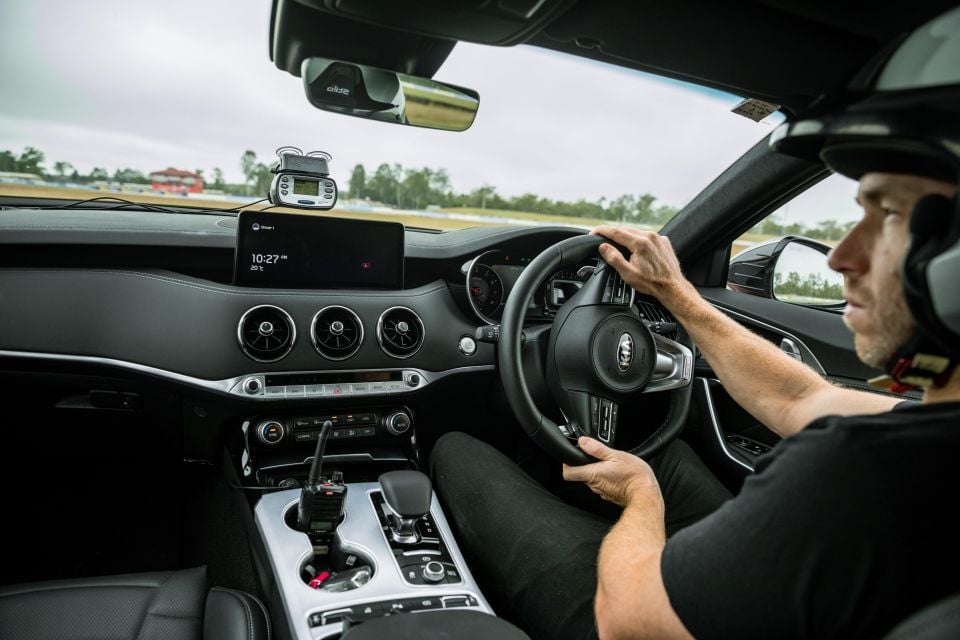
I was really impressed with how well the seats held you in place once switched into Sport mode. The side bolsters adjust to add more lateral support and it actually works quite well. Initially I wasn’t very impressed with the support.
I had to back them off at the end of the day, with my rib area starting to ache from how securely I was being held.
The rest of the interior was very clean and easy to manage. The selector for sports mode was nicely located on the centre console, and although I prefer these on the wheel, this is the next best location I have found.
The seating position and visibility was very good and made the Kia Stinger GT feel like a much smaller car than it actually is. You actually feel like you’re in a cockpit!
The steering wheel was an ideal size and shape, although an alcantara finish would have been nice for my sweaty palms while staring out the side window and 140km/h.
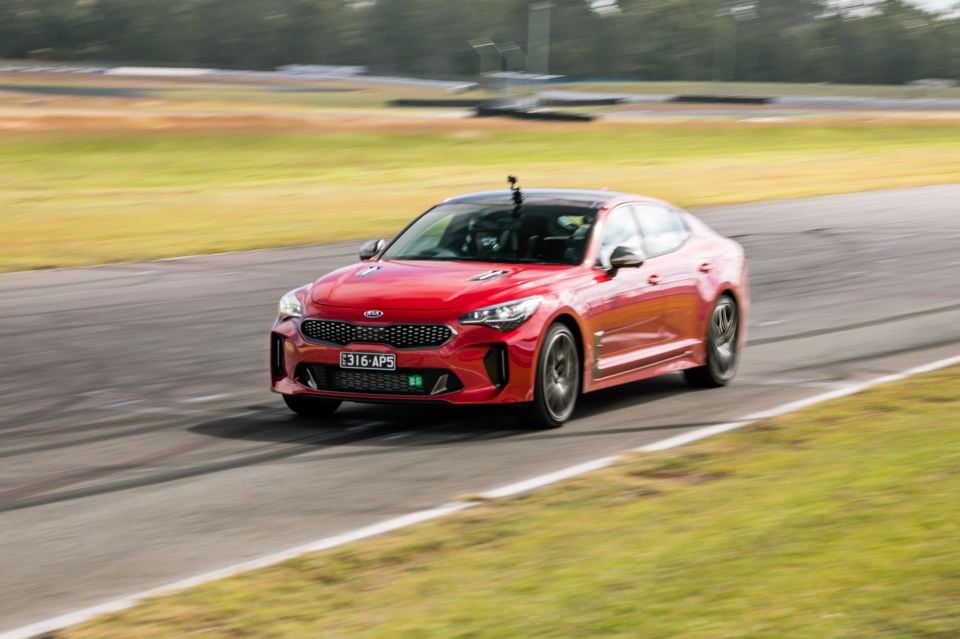
As you might be able to tell, I was not disappointed with the Kia Stinger GT. I had so much fun on the track, but also had to really focus to get the most out of it.
The final time of 60.64 seconds sits it firmly in the middle of the CarExpert leaderboard. I think if everything went perfectly you could crack the minute mark, but it is still very impressive for a traction limited, moderately priced GT car.
This places it ahead of the Audi S4 and only 1.3sec behind the Lexus RC F, which has a lot more power and costs over twice the price.
If you’re after a vehicle that doesn’t break the bank, is very entertaining and has a good turn of speed, it is hard to look past the Kia Stinger GT.
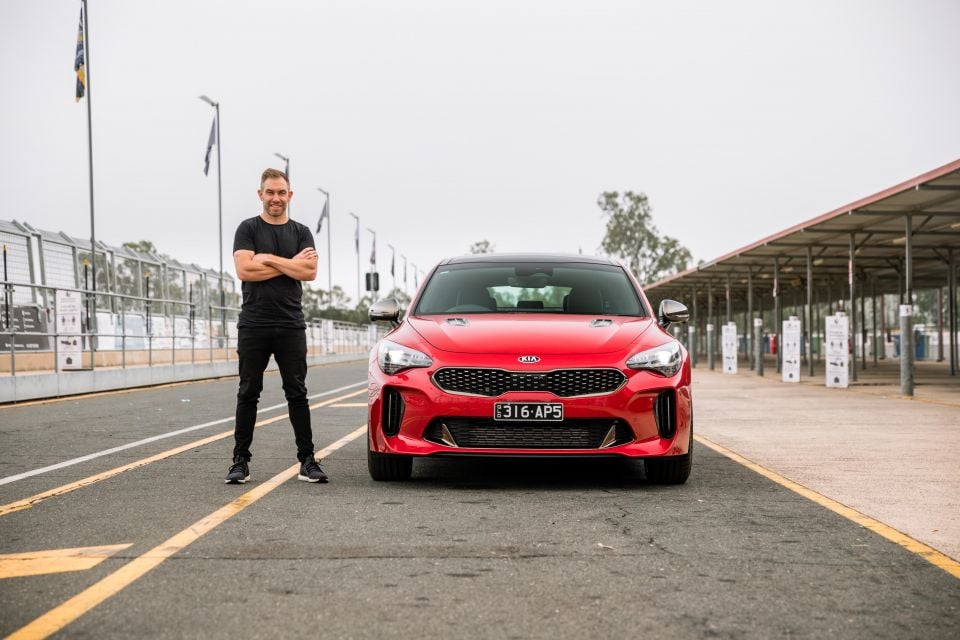
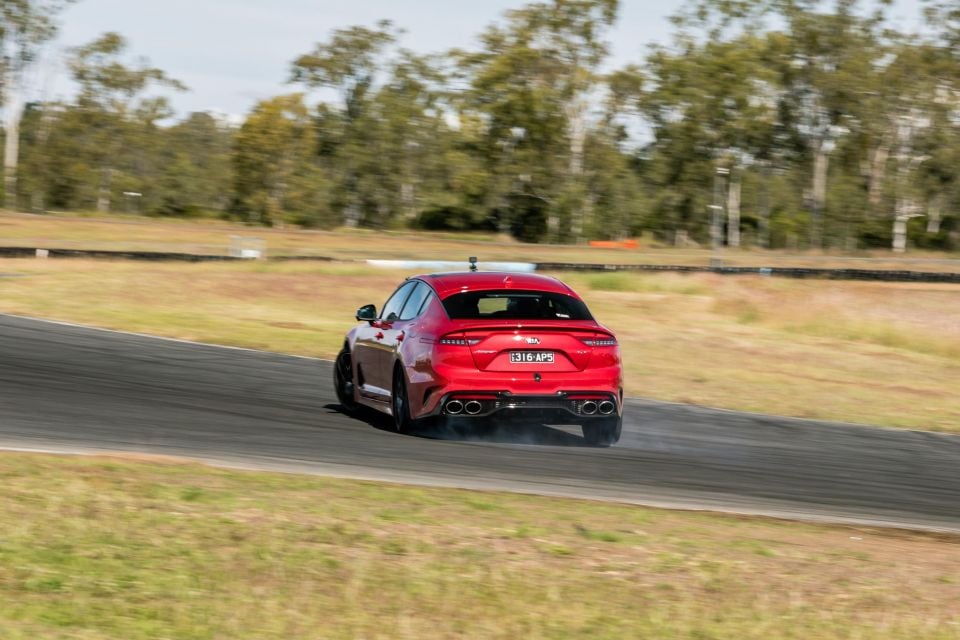
Where expert car reviews meet expert car buying – CarExpert gives you trusted advice, personalised service and real savings on your next new car.
Click the images for the full gallery
Where expert car reviews meet expert car buying – CarExpert gives you trusted advice, personalised service and real savings on your next new car.


Max Davies
2 Hours Ago


William Stopford
18 Hours Ago


Ben Zachariah
19 Hours Ago


Derek Fung
20 Hours Ago


Matt Campbell
1 Day Ago


William Stopford
2 Days Ago